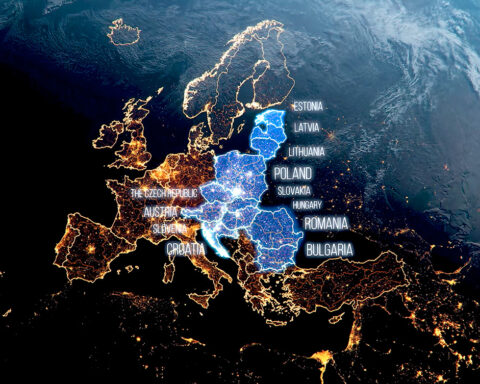The fDi Insights is part of fDi Intelligence, a specialized periodical publication that provides an up-to-date overview of global investment activity, news, and studies related to Foreign Direct Investments. fDi Intelligence is owned by Financial Times Ltd., and fDi Insights is the division that deals with data analysis and processing, creating personalized reports and analyses that provide a wide range of industries with the necessary business knowledge.
In 2023, fDi Insights released its latest report on European cities from a business perspective. The report includes, among other things, rankings of the TOP 10 European cities based on their investment attractiveness. Each ranking is divided into five categories: Connectivity, Economic potential, Cost-effectiveness, Human capital & lifestyle, and Business friendliness, and an overall summary for each size category.
While the top positions in the highest Major Cities-tier are not surprising and usually are occupied by traditional financial centers and business-service and industrial giants like London, Hamburg, Amsterdam, etc., more interesting things in the context of the 3SI region happen in between smaller cities, especially when you dive into the subcategories. It’s time for a quick overview of the rankings according to city size because the further we go, the more interesting it gets. Let’s start with Major Cities, divided into categories:
Major European cities of the future
“Overall Ranking” – Warsaw ranks 6th. “Cost-effectiveness” – This category was dominated by cities in the Three Seas Region. “Business friendliness” – Warsaw surprises with 2nd place. Bucharest also made it to the list in 7th place, surpassing Prague in 10th place. “Human capital & lifestyle” – Bucharest is in 6th place, Prague in 7th. “Economic potential” – Warsaw ranks 8th. “Connectivity” – Unfortunately, none of the 3 Seas cities made it to the ranking.
Large European cities of the future
Large Cities – In this ranking, the Three Seas Region is represented only by Polish cities Kraków and Poznań. However, it is comforting to see these cities ranked high in the “Overall” category (3rd place for Kraków, 7th place for Poznań), “Business friendliness” (1st place for Kraków, 2nd place for Poznań), and “Human capital & lifestyle” (2nd place for Kraków).
Mid-sized European cities of the future
In the tier of Mid-sized Cities, the presence of 3SI towns is particularly noticeable. Here, Lithuania and Vilnius come into play, taking 2nd place in the “Overall and Economic” potential categories. The ranking also includes Riga, Tallinn, Wrocław, and Bratislava in the top six of the “Human capital & lifestyle category” – their high positions are pleasing. Only Bratislava made it to the 6th place in the “Connectivity” category. On the other hand, the “Business friendliness” category was dominated by Polish, Slovakian, Estonian, and Lithuanian cities. Clearly, there’s a good foundation for building better economic potential that is still lacking in those places.
Small European cities of the future
When it comes to Small Cities – Bulgarian towns take the lead in the “Cost effectiveness” category. We also fare well with Lithuania and Romania in the “Business friendliness” category. It’s gratifying to see the Romanian city of Timisoara in the top ten small cities with the highest economic potential.
Micro European cities of the future
As for Micro Cities, in line with the trend, the CEE region is mainly represented in the “Cost effectiveness” and “Business friendliness” categories. This shows that a lot more focus and effort should be put into these areas to develop higher attractiveness, as cost-effectiveness and business friendliness may not be enough to attract investors.
The 3SI Region consists mainly of mid-sized and small countries with a relatively small number of major and large cities that are comparable to Western cities like London, Berlin, and Paris. That’s why the 3SI smaller cities in this ranking may escape your attention, but if you take a closer look at the report, you’ll see that they have a lot of potential – especially in categories such as “Cost effectiveness,” “Business friendliness,” and “Human capital.”
It’s also worth noting that many 3SI cities are shaking up the rankings, even outperforming cities like Zurich and Manchester. What we can deduce from The European Cities and Regions of the Future 2023 report is that indeed our region has significant potential to bring a fresh breeze of business energy to Europe.







